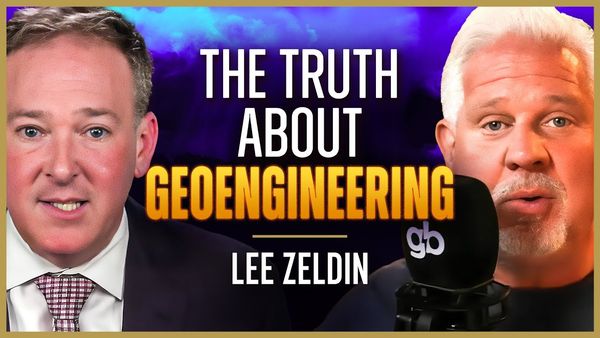Trump’s EPA chief takes on geo-engineering: Lee Zeldin targets ‘playing God’ with weather control

Geo-engineering — the various processes by which the weather is intentionally altered — is a growing concern, not just here in America but across the globe. Many wonder if practices like cloud seeding, where silver iodide or dry ice is dispersed into clouds to induce precipitation, or solar radiation management, where aluminum oxides or sulfates are injected into the stratosphere to reflect sunlight and reduce global temperatures, risks meddling with cosmic forces we can’t even begin to fully realize.
“Geo-engineering really scares me because it seems like we're starting to play God,” says Glenn Beck.
Even more worrisome is the fact that the Environmental Protection Agency has historically been minimally involved in geo-engineering, leaving it up to private companies and researchers to experiment with delicate weather patterns that potentially impact the entire globe. Far more concerned with imposing strict regulations that stifle economic growth but do little to actually protect the environment, the EPA has largely ignored the growing list of consequences of geo-engineering – like acid rain, ozone depletion, and ecosystem disruption.
But that’s all changing under Trump EPA Administrator Lee Zeldin — a man Glenn says is “killing it.” He is taking charge of the agency in ways we’ve never seen before. Unlike former EPA chiefs, who had limited engagement with geo-engineering, Zeldin has prioritized transparency by launching new online resources to address public concerns about geo-engineering and contrails, while actively investigating private activities of geo-engineering companies.
“I agree with your concern just with the idea of playing God,” he told Glenn on a recent episode of “The Glenn Beck Program.”
“It's not like [geo-engineering] is thoroughly studied,” “approved,” “trusted,” or “vetted,” he says.
The vast majority of geo-engineering practices, he explains, are spearheaded by “people who just want to do it on their own,” so they lobby for “someone to hand over a billion dollars” so they can “go dump a whole bunch of sulfur dioxide into the stratosphere.”
“No, that doesn't sound good; it doesn’t sound right; and it shouldn’t happen,” says Zeldin.
Glenn remembers fearmongering about “global cooling” when he was a child. “There were these scientists that said, ‘We need to dump coal ash on the polar caps because that will attract the heat and stop the impending ice age that was coming,”’ he recounts. “Can you imagine if we had done that? What a stupid idea.”
Today, however, global warming is what the majority of “experts” fret about, and that’s what geo-engineering primarily aims to mitigate.
Except global warming — at least the assumption that the planet is catapulting towards combustion — has been proven overblown. Zeldin reflects on how countless predictions about the planet’s demise have failed to come true. “Six years ago, AOC was saying that in 12 years the planet was going to end. ... Six years later, obviously that's not going to happen,” he says.
The days of writing policy based on the doomsday predictions of “experts” are over under Zeldin’s EPA. The Obama administration’s Endangerment Finding that declared greenhouse gases a threat to public health, resulting in over $1 trillion spent on rigid and economically disastrous climate regulations under the Clean Air Act, is the shameful past Zeldin is moving away from.
“When you're talking about trillions of dollars of federal policy coming out, it should be something decided by Congress. There should be a debate and a vote of the elected representatives of the American people instead of some bureaucrat at some agency deciding to oppose trillions of dollars of regulation on their own,” he tells Glenn.
“In that 2009 Endangerment Finding, there were a whole bunch of different references to interpreting how the law doesn't prevent [agencies] from doing something, so therefore, they must be allowed to do it. That's not how I'm going to operate,” he vows. “I will just follow the plain reading, the plain text of the law, and if Congress wants to change the law, then we'll follow whatever that change is. That is our job.”
To hear more about what the EPA is doing under Zeldin’s leadership, watch the full interview above.
Want more from Glenn Beck?
To enjoy more of Glenn’s masterful storytelling, thought-provoking analysis, and uncanny ability to make sense of the chaos, subscribe to BlazeTV — the largest multi-platform network of voices who love America, defend the Constitution, and live the American dream.








 A climate startup that launched sulfur to block the sun follows ‘environmental, social, and governance’ investing to its logical conclusion and could significantly damage our planet.
A climate startup that launched sulfur to block the sun follows ‘environmental, social, and governance’ investing to its logical conclusion and could significantly damage our planet.